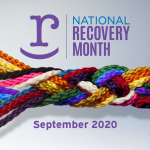Sanctuary Centers has come into many lives unexpectedly.
Some of us have found Sanctuary by seeking help and care for ourselves or for our loved ones. Whether it’s in an hour of need, in a crisis, or figuring out next steps, Sanctuary is always one call away.
For me and my family, Sanctuary was a godsend.
When Everything Changed
At 3PM on June 6, 2003 the psychiatrist delivered his diagnosis. My daughter had schizoaffective disorder.
Despite graduating from university two years prior, Marika could no longer organize her thoughts, nor track long enough to watch a feature-length movie. She had wild mood swings that could not be explained by hormone cycles. It was becoming clear that she could no longer live independently as she was making bad, if not dangerous decisions. Furthermore, her condo was becoming a health hazard. As a family, we were distraught and desperate for options.
I remember well the initial meeting she and I had with Barry Schoer. He explained to us the individualized treatment plans, the daily schedule of therapies—from art and music to DBT, CBT and EMDR—the group outings every weekend, and the continuum of care model to help every client reintegrate into the community.
She and I readily agreed that Sanctuary Centers was exactly what we were looking for.
Settling into Sanctuary
Marika was thrilled in her new home.
Sanctuary offered the structure she wanted and needed. Marika lived in the Sanctuary House for seven months. She attended groups at Sanctuary’s outpatient program and met with an employment specialist who helped her find volunteer jobs for which she was suited. She saw the staff psychiatrist on a regular basis and worked closely with her psychologist case worker.
As a family, we had monthly meetings with the Sanctuary staff who oversaw Marika’s care. We felt like we were included in every decision. We were part of her clinical care, and she was too.
Reintegration After Recovery
After seven months, we all agreed that Marika was ready to try independent living.
So, she moved into the Sanctuary’s Hollister apartments, adjacent to the outpatient center and just down the street from the Sanctuary House inpatient program. This transition allowed her to maintain the relationships she had built over the months. We arranged for in-home supportive services to help her with tasks such as grocery shopping. In-home supportive services also helped her relearn how to wash her dishes, make her bed and clean her bathroom. She continued to see the staff psychiatrist and worked closely with her psychologist case worker.
As a family, we continued to meet with the Sanctuary staff overseeing her treatment plan.
While our lives would never be what they were prior to the onset of her psychiatric illness, we were developing the skills we needed to support our daughter and communicate effectively with each other. It was so important for us to do this, individually and as a family.
What Worked for Us
The continuum of care offered by Sanctuary Centers is unique to our community.
Many local programs are in collaboration with other agencies and include employment services in partnership with the Department of Rehabilitation. Sanctuary has a longstanding relationship with the Housing Authority of Santa Barbara to provide safe and sober homes for individuals with co-occurring mental health and substance use issues.
It also provides supportive housing for people like my daughter who are graduates of Sanctuary House.
Also, Sanctuary runs an integrated care clinic that offers dental, medical and behavioral health services. These offerings represent a sample of the comprehensive array of services and programs offered by Sanctuary Centers. Rather than having to parse together a patchwork quilt of services from disparate agencies, an individual or an entire family can find needed support at Sanctuary Centers of Santa Barbara.
For my family, Sanctuary Centers was truly the answer to our prayers!
About the Author

Ann Lippincott, PH.D
Dr. Ann Lippincott earned her Bachelor’s degree at the University of Southern California, then obtained her Master’s and Ph.D. at the University of California, Santa Barbara. In addition to a life-credential to teach grades K-9 in California, she also has a bilingual specialist credential with professional expertise in language and literacy development.
Retired from the Teacher Education Program in the Gevirtz Graduate School of Education at UCSB, Dr. Lippincott also taught in the teacher credential programs at both Antioch University-Santa Barbara and Westmont College. In addition to serving on the Board of Directors of Sanctuary Centers, she is also on the Board of Directors for the Mental Wellness Center in Santa Barbara, where she leads the Education Committee, responsible for developing and teaching Mental Health Matters. Ann also teaches NAMI Family-to-Family courses as well as Mental Health First Aid and Youth Mental Health First Aid. In 2016 Ann was named a local hero by The Santa Barbara Independent for her work to destigmatize mental illness.


